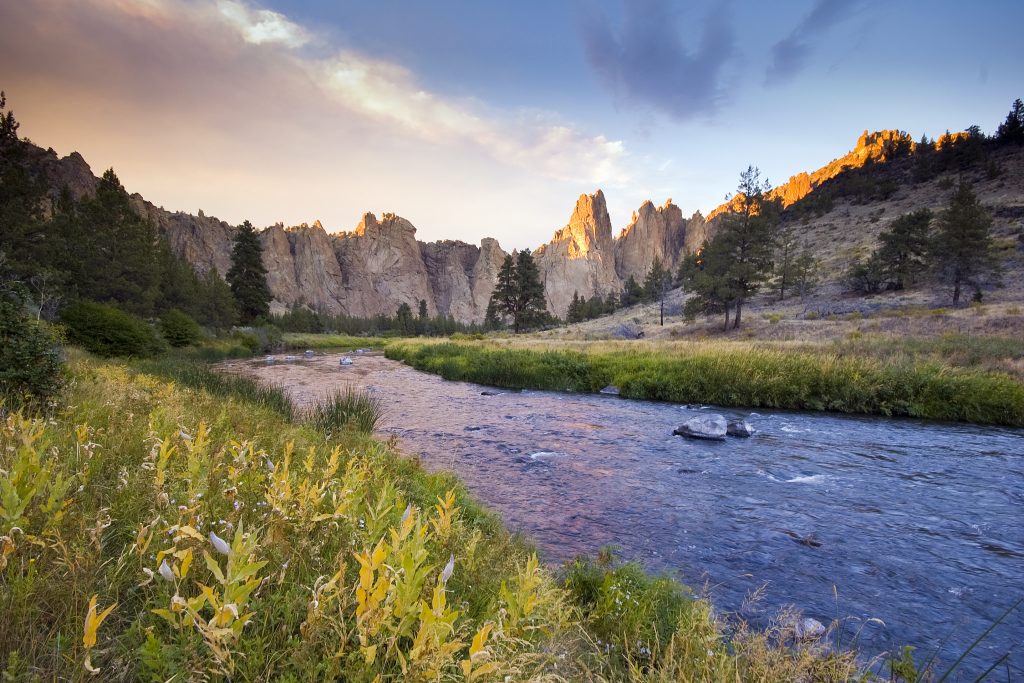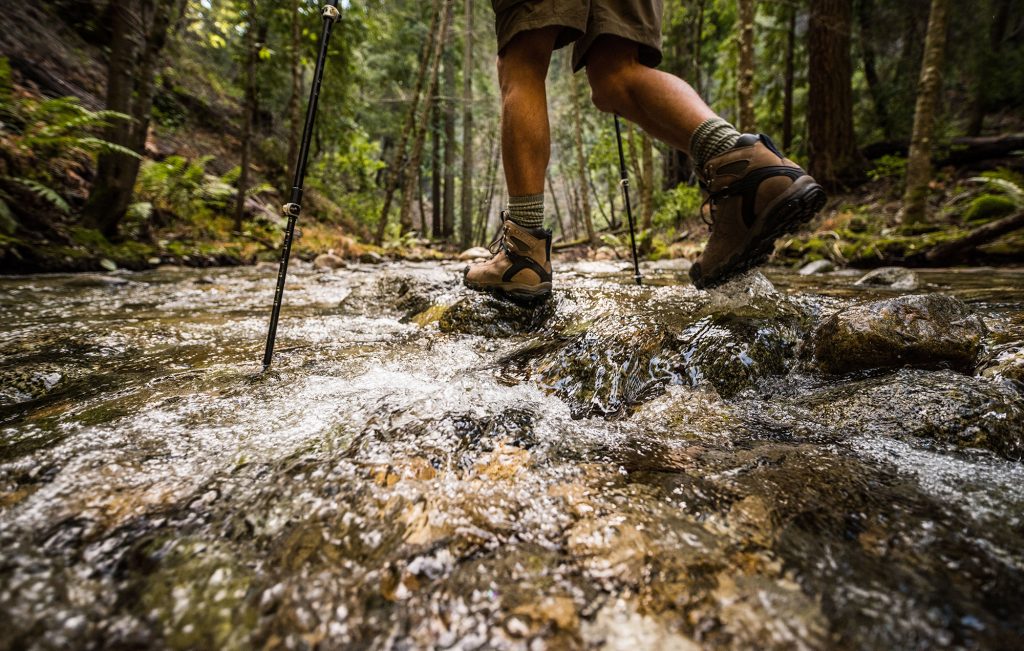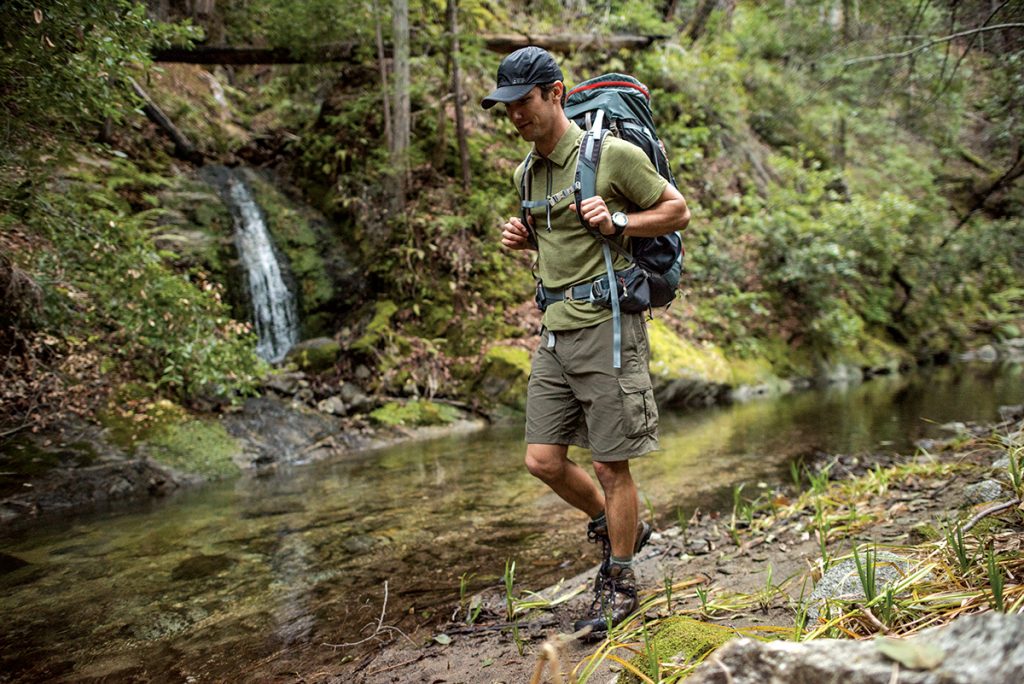The Greek philosopher Heraclitus said, “You never step into the same river twice.” Although this aphorism has broad philosophical implications, it still holds true if interpreted literally. Rivers are powerful and can be unpredictable. From trickles to torrents, river crossings are one of the most dangerous hurdles that hikers must overcome. So, to prepare, here are a few tips to keep in mind for the next time your hike leads you to a riverbank.
Before Your Trip
Study your map: Are there any obvious river crossings that you should prepare for?
Research beta: The internet holds a plethora of hiking guides and beta that can give you a heads-up for any challenges you may face.
Ask about the water levels by calling the park service or another land manager before your trip.
Pack wisely: Consider packing a lightweight dry bag and sandals!

On Your Trip
Risk versus reward
Is there another way around? Jumping on rocks may keep you dry, but practice extreme caution, because the water may make the rocks slick.
Take stock of the situation
How fast is the water flowing? Can you see the bottom of the river? Is the riverbed made up of solid rock, sand, or loose or slick boulders? What is the safest path? Typically, a wider section will be shallower than a narrow channel. As well, take a look downstream for obstacles like waterfalls that could pose a serious danger if you were to fall in.
Wear proper attire
Wearing sandals or other shoes will protect your feet from injury and help prevent slips. However, baggy clothes will make it substantially harder to move when you’re wet, especially if you end up having to swim. If you are wearing a backpack, it is wise to unclip your straps to make it easier to swim in case you fall in.
Have a plan
If you are in a group, decide whether someone should cross first, and then, set up a rope to make subsequent crossings and gear transport safer and easier. If you are alone, have a plan B. Always have a rescue plan.
Know the stance
If you are crossing alone, face upstream, or into the current, and take a wide stance, leaning forward with bent knees. Use a stick or trekking pole to create a tripod for more stability. Then, take small side-steps, judging the quality of each foot placement before committing. Avoid lifting your foot too high to prevent falling in if your other foot stumbles. Face upstream at all times, but travel at a slight diagonal downstream to save energy.
If you are hiking in a group of three or more, the safest way to cross as a unit is to form a stable foundation, such as a triangle, square, pentagon, or another shape. To form this sturdy base, group members should stand on the shoreline facing each other. Then, raise your arms, and place your hands firmly on the shoulders of the person standing next to you. With everyone holding this strong framework, take small steps as you cautiously cross the river.
Know what to do if you fall in
If possible, swim to the other side, directing your stroke slightly upstream. If the current is too strong to swim, drift with your feet in front of you on your butt until the river calms down.

Things to Consider
The early bird gets the worm
In the spring, water levels are the lowest early in the day before the snow melts, so time your river crossing wisely!
Water flows in tiers
The water’s surface flows at a different rate from the depths, and the flow rate is typically slower near the banks than in the middle. So, lifting your foot too high can mean it gets caught by a faster-flowing current, which can cause you to stumble or fall. This also explains why you should be cautious with every step until you are safely on the other side. The current will flow at different speeds throughout the entire river, so each step presents a different challenge.
Volume and velocity
A slow-moving river with a high volume of water can pose just as much danger as a lower-volume stream moving quickly.
Don’t rely on underwater support
Logs and boulders may seem like attractive handholds, but they can easily break loose underwater. Instead, try to rely on the stable tripod foundation that you form with a stick or trekking pole.
Practice caution with logs
Logs that span a river offer an appealing way across, but they can break loose and could even pin you underwater. Be sure to thoroughly test logs before trusting them.
Be willing to back out
If you feel uncomfortable going any further, turn back and search for another place to cross.
Know when to wait it out
Being able to identify when you shouldn’t cross a river is just as important as knowing how to ford through it. You may want to reconsider if you cannot see the bottom, the water level is above your knees, the current seems intensely strong at the riverbank, there is flash flood potential, or if the water is excessively cold. Be patient, because water levels can change within an hour!

The next time your adventure requires you to pass through a river, keep these tips in mind. Can you think of any more tips? If so, leave them in the comments below!
Edmund Falkowski
Born in Buffalo, NY without easy access to mountains, Edmund grew up focused on academics, music, and team sports. After a back injury at age 15, he discovered trail running and climbing. It wasn’t until his freshman year of college that he actually experienced the mountains, but he immediately found a home-away-from-home in the Adirondacks. He now pursues his passions of climbing hard and hiking fast as a Trip Leader in his college’s Outdoor Adventure Club while juggling his college education in Physical Therapy. At the end of the day, Edmund is just really stoked to spend time outside, and is always planning his next sufferfest.
Related Posts
April 2, 2024
10 Tips for Mountain Biking Etiquette During Mud Season
One rough spring could ruin the…
1 Comment
Comments are closed.





[…] Pro Tip: When water levels are high, getting past a water crossing requires more than the right footwear. Check out this guide on safely crossing backcountry rivers. […]